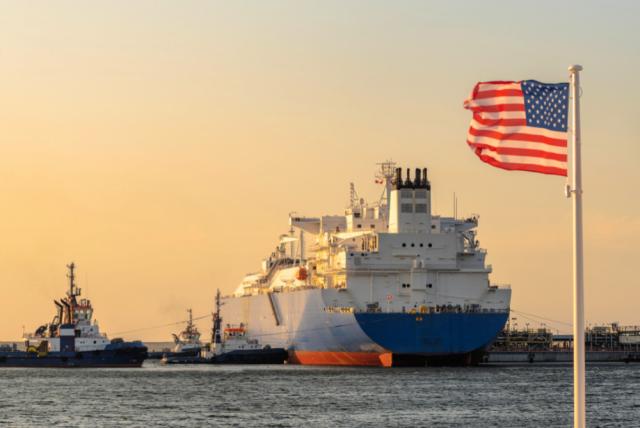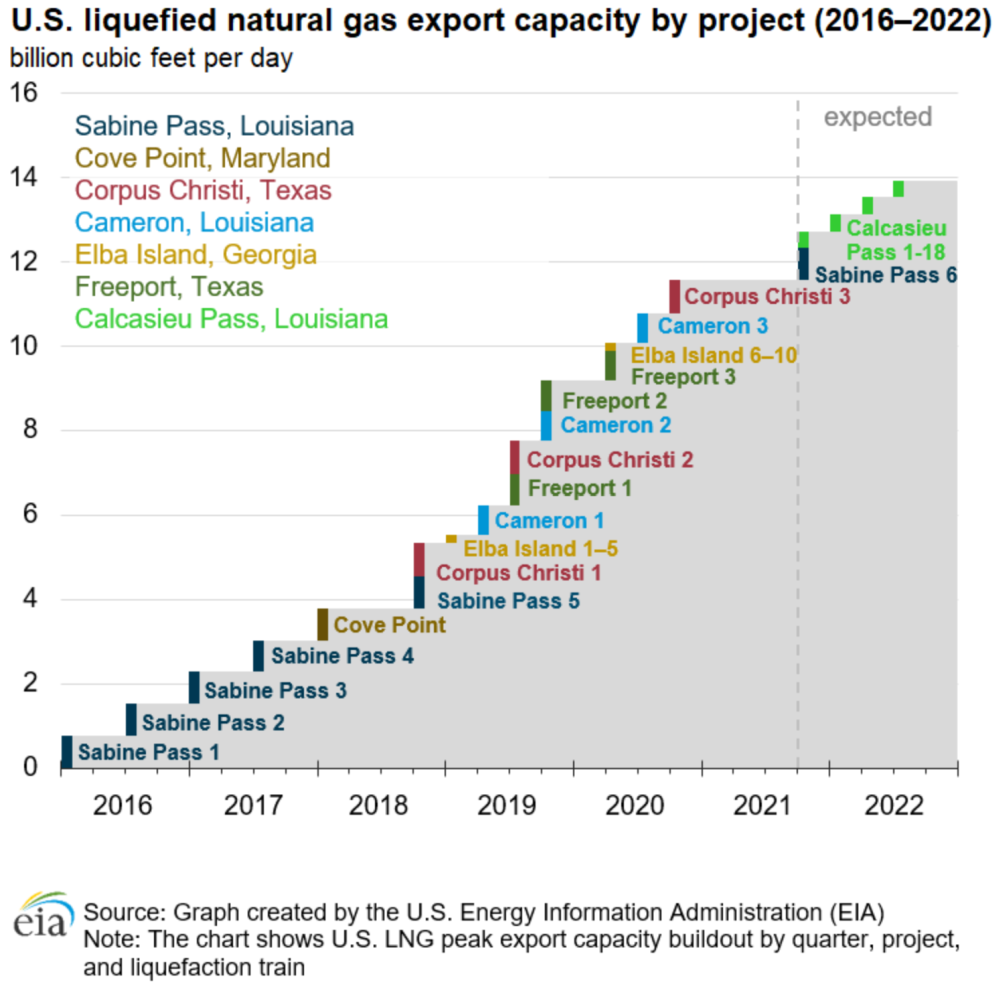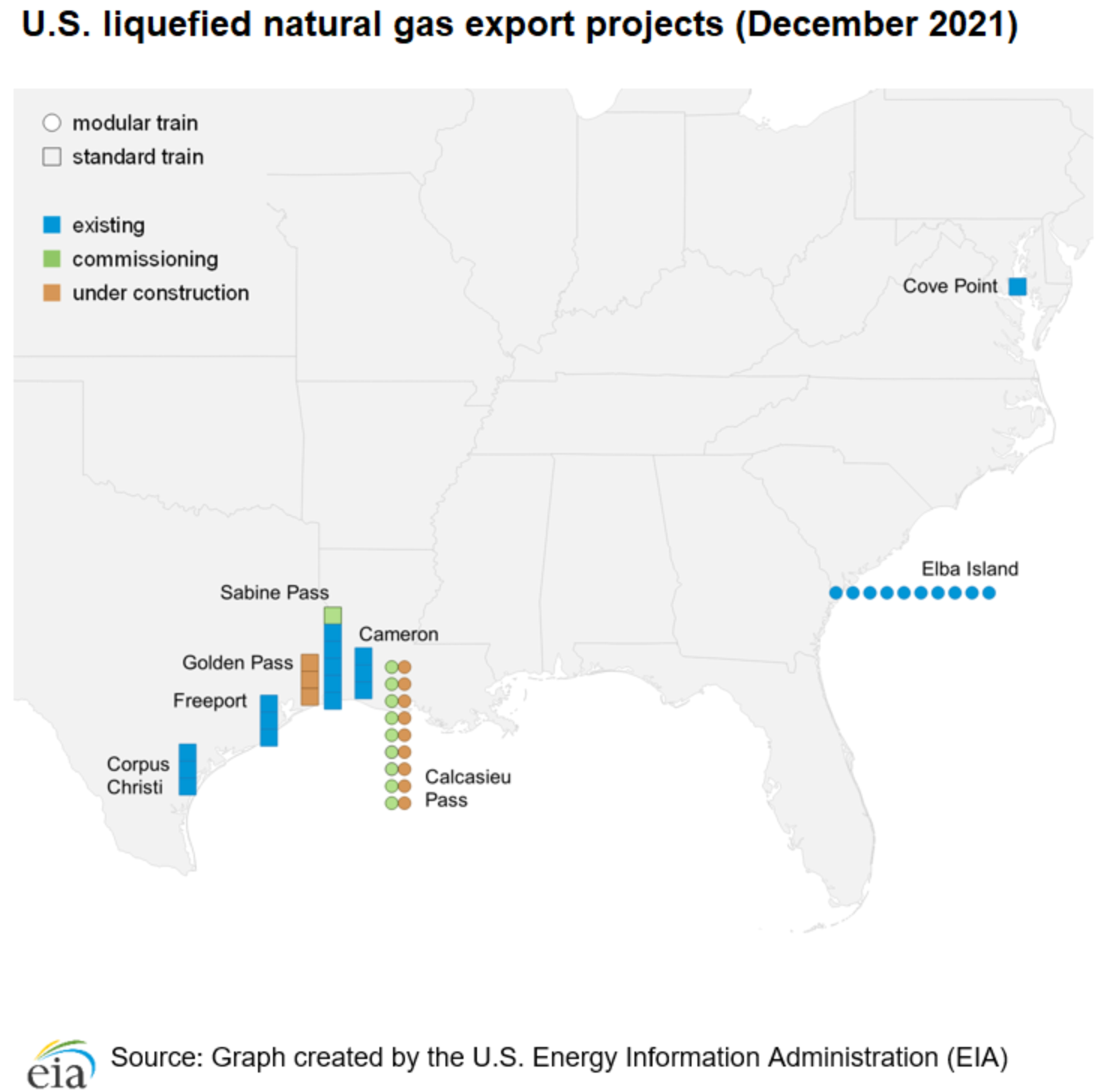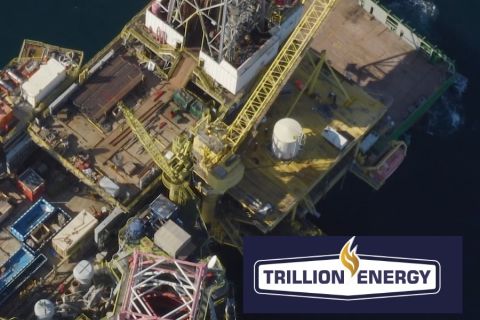
When Golden Pass LNG—the eighth U.S. LNG export facility—completes construction and begins operations in 2024, the EIA estimates U.S. LNG peak export capacity will further increase to an estimated 16.3 Bcf/d. (Source: Shutterstock.com)
Learn more about Hart Energy Conferences
Get our latest conference schedules, updates and insights straight to your inbox.
The U.S. is on the verge of dominating the global LNG market, according to a recent report by the U.S. Energy Information Administration (EIA).
The U.S. began exporting LNG from the Lower 48 in February 2016 and, seemingly overnight, became the world’s third-largest LNG exporter following the rapid development of export terminals across the country. Now, based on the slew of announced project plans for capacity expansions, the EIA is predicting U.S. LNG export capacity will be the world’s largest by 2022.
“In 2022, U.S. LNG export capacity will exceed that of the two current largest global LNG exporters, Australia (11.4 Bcf/d) and Qatar (10.3 Bcf/d),” the EIA said in the report published on Dec. 2 attributing the milestone to new LNG liquefaction units (called trains) expected to be placed in service in 2022 at Sabine Pass LNG and Calcasieu Pass LNG.

According to announced project plans, the EIA lists the following U.S. LNG export capacity expansions will occur between December and Fall 2022:
- Completion of Train 6 at the Sabine Pass LNG export facility. Train 6 will add up to 760 MMcf/d of peak export capacity. Train 6 began producing LNG in late November and the first export cargo from this train is expected to be shipped before the end of this year.
- Increase in LNG production at Sabine Pass and Corpus Christi LNG terminals as a result of optimizing operations. The U.S. Federal Energy Regulatory Commission (FERC) approved an increase in annual LNG production at these two facilities by a combined 261 Bcf per year or 700 MMcf/d (11.5%) through uprates and modifications to maintenance. Individually:
- FERC granted approval to increase LNG production at Sabine Pass LNG from 1,509 Bcf per year to 1,662 Bcf per year across six liquefaction trains, an increase of 10%.
- FERC approved an LNG production increase at Corpus Christi LNG from 767 Bcf per year to 875 Bcf per year across three trains currently in operation, an increase of 14%.
- New LNG export facility Calcasieu Pass LNG in Louisiana comes online. The project consists of 9 blocks, each containing two mid-scale modular liquefaction units for a total of 18 liquefaction units with a combined peak capacity of 1.6 Bcf/d. Commissioning activities at Calcasieu Pass LNG started in November, and the first LNG production is expected before the end of this year. All units are expected to be placed in service by fourth-quarter 2022.

As of November, the EIA estimates existing U.S. LNG nominal baseload liquefaction capacity was 9.5 Bcf/d and peak capacity was 11.6 Bcf/d, which includes uprates to LNG production capacity at Sabine Pass and Corpus Christi.
“By the end of 2022, U.S. nominal capacity will increase to 11.4 Bcf/d and peak capacity to 13.9 Bcf/d across seven LNG export facilities and 44 liquefaction trains, including 16 full-scale, 18 mid-scale and 10 small-scale trains at Sabine Pass, Cove Point, Corpus Christi, Cameron, Elba Island, Freeport and Calcasieu Pass,” the EIA said in the report.
In addition, FERC and the U.S. Department of Energy have approved another 10 U.S. LNG export projects and capacity expansions at three existing LNG terminals—Cameron, Freeport and Corpus Christi—totaling 25 Bcf/d of new capacity. Developers of some of these projects announced plans to make a final investment decision (FID) in 2022.
“By 2024, when Golden Pass LNG—the eighth U.S. LNG export facility—completes construction and begins operations, U.S. LNG peak export capacity will further increase to an estimated 16.3 Bcf/d,” the EIA added.
Recommended Reading
E&P Highlights: April 15, 2024
2024-04-15 - Here’s a roundup of the latest E&P headlines, including an ultra-deepwater discovery and new contract awards.
Trio Petroleum to Increase Monterey County Oil Production
2024-04-15 - Trio Petroleum’s HH-1 well in McCool Ranch and the HV-3A well in the Presidents Field collectively produce about 75 bbl/d.
Trillion Energy Begins SASB Revitalization Project
2024-04-15 - Trillion Energy reported 49 m of new gas pay will be perforated in four wells.
Exxon Ups Mammoth Offshore Guyana Production by Another 100,000 bbl/d
2024-04-15 - Exxon Mobil, which took a final investment decision on its Whiptail development on April 12, now estimates its six offshore Guyana projects will average gross production of 1.3 MMbbl/d by 2027.
US Drillers Cut Oil, Gas Rigs for Fourth Week in a Row-Baker Hughes
2024-04-12 - The oil and gas rig count, an early indicator of future output, fell by three to 617 in the week to April 12, the lowest since November.




